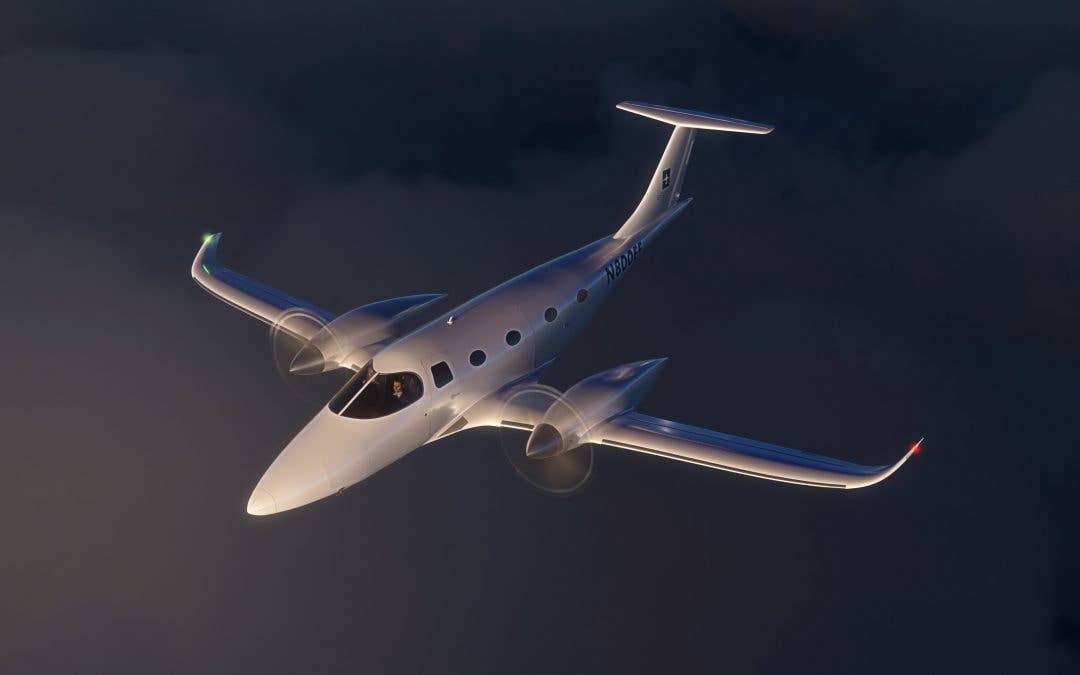Bye Aerospace Introduces Eight-Seat eFlyer
Bye Aerospace officially unveiled its new eight-seat eFlyer 800 all-electric twin “turboprop class” aircraft design on Thursday. Aimed at the air-taxi, air-cargo, regional and charter aircraft markets, the eFlyer 800…

Image: Bye Aerospace
Bye Aerospace officially unveiled its new eight-seat eFlyer 800 all-electric twin "turboprop class" aircraft design on Thursday. Aimed at the air-taxi, air-cargo, regional and charter aircraft markets, the eFlyer 800 will feature two wing-mounted electric motors with dual redundant motor windings, quad-redundant battery packs and a whole airframe parachute. According to Bye, operating cost for the aircraft will be one-fifth that of “traditional” twin turboprops.
“The eFlyer 800 is the first all-electric propulsion technology airplane that achieves twin-turboprop performance and safety with no CO2 and extremely low operating costs,” said Bye Aerospace CEO George Bye. “This type of remarkable economy and performance is made possible by the electric propulsion system and advanced battery cell technology that results in significantly higher energy densities.”
Bye Aerospace is working with Safran on an electric powertrain for the eFlyer 800, which is expected to have a top cruise speed of up to 320 knots, 35,000-foot ceiling and 500-NM range with 45-minute IFR reserves. The company is also looking at offering an emergency autoland system for the aircraft along with options for supplemental power solar cells and in-wheel electric taxi. In addition to developing the 800, Bye is currently pursuing FAA Part 23 certification for its two-seat eFlyer 2, which flew for the first time in April 2018, and four-seat eFlyer 4.






